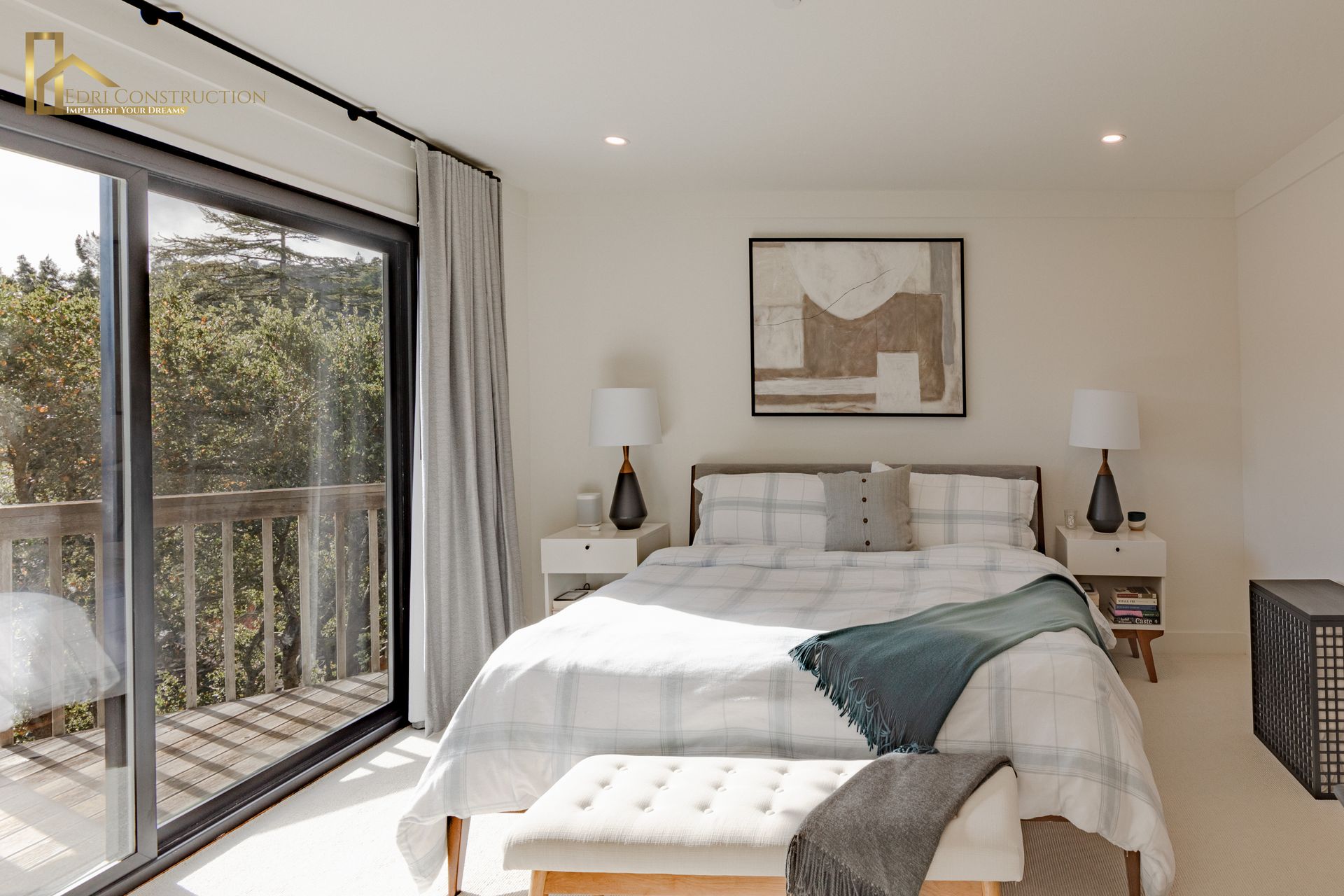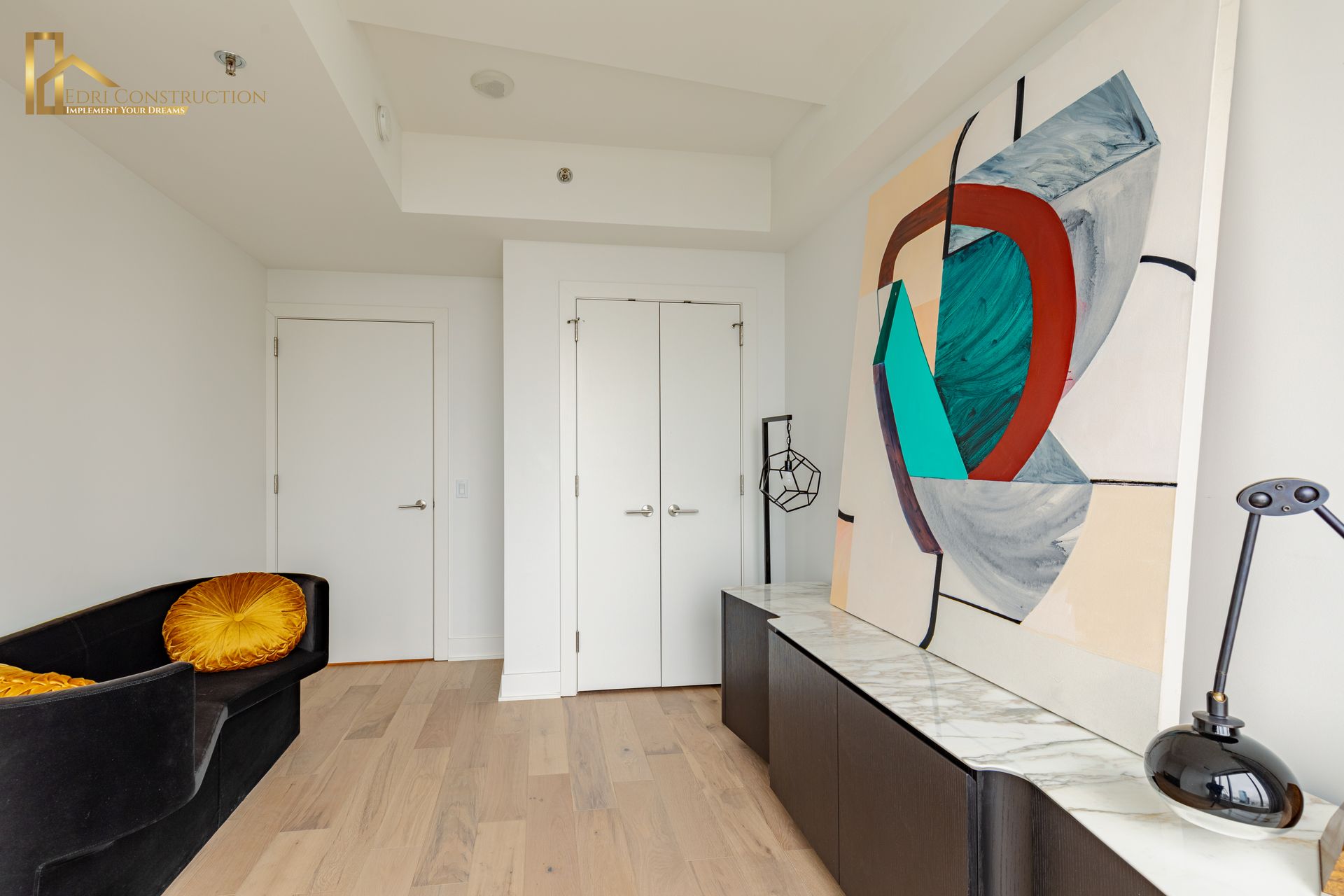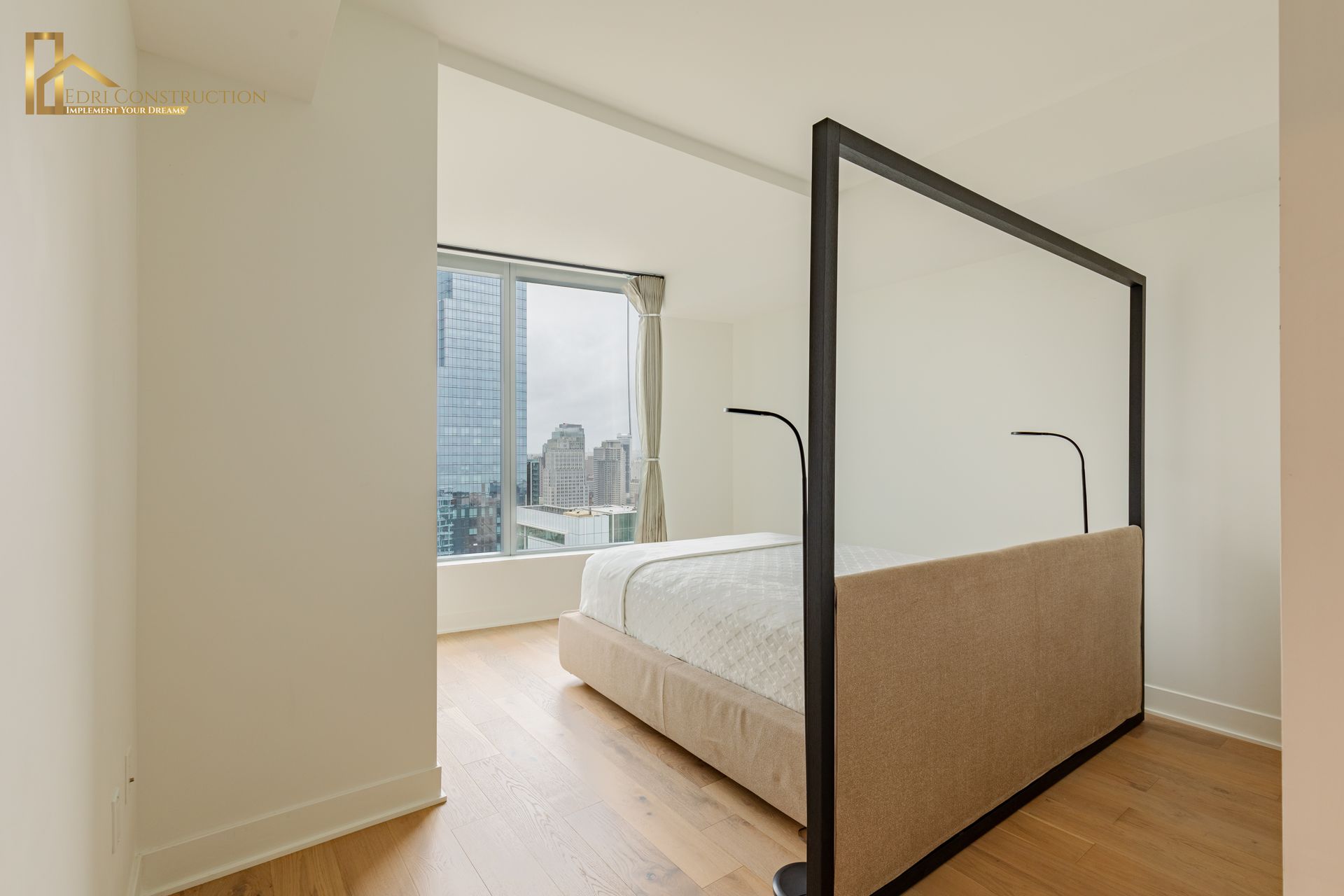What Are the Benefits of Green Home Remodeling Practices?

INTRODUCTION
The intersection of environmental awareness and contemporary lifestyles has given rise to a pivotal trend: green home remodeling. This eco-conscious approach not only enhances the aesthetics of living spaces but also plays a crucial role in reducing carbon footprints and improving overall quality of life. As society increasingly embraces sustainable living, it's essential to explore the diverse advantages of integrating green principles into every facet of home renovation.
Green home remodeling represents a beacon of hope in our efforts to combat environmental challenges. By opting for eco-friendly renovation solutions, homeowners contribute to mitigating the adverse effects of climate change. From reducing energy consumption to minimizing waste generation, these practices align with global sustainability goals. Furthermore, they foster a sense of responsibility towards future generations, promoting a legacy of environmental stewardship.
One of the primary benefits of green home remodeling is its positive impact on indoor air quality. Traditional renovation materials often contain harmful chemicals and volatile organic compounds (VOCs), which can adversely affect occupants' health. Conversely, eco-friendly alternatives prioritize non-toxic, low-emission materials, creating healthier indoor environments. This focus on air quality enhances comfort and well-being, particularly for individuals with respiratory conditions or sensitivities.
Green remodeling strategies offer substantial energy efficiency improvements. By incorporating features such as high-performance insulation, energy-efficient appliances, and passive solar design principles, homeowners can significantly reduce their utility bills while lessening their reliance on non-renewable energy sources. These measures not only save money in the long run but also contribute to broader efforts to combat climate change by reducing greenhouse gas emissions.
Green home remodeling promotes resource conservation through the use of sustainable materials and construction practices. From reclaimed wood flooring to recycled glass countertops, eco-friendly options abound, offering both aesthetic appeal and environmental benefits. By prioritizing durability and recyclability, homeowners can minimize the environmental impact of their renovation projects while simultaneously adding unique character to their homes.
Beyond the tangible benefits, embracing green principles in home remodeling fosters a sense of pride and connection to the natural world. By creating spaces that harmonize with their surroundings, individuals cultivate a deeper appreciation for the environment and their role in preserving it. This heightened awareness can inspire further eco-conscious decisions in other aspects of life, creating a ripple effect that extends beyond the confines of the home.
Green home remodeling represents a holistic approach to sustainable living, offering numerous benefits for both homeowners and the planet. By prioritizing environmental consciousness in every aspect of renovation, individuals can create healthier, more energy-efficient, and aesthetically pleasing living spaces while contributing to a more sustainable future for generations to come.
Environmental Conservation

Green home remodeling practices are driven by a noble aim: environmental conservation. When homeowners choose eco-friendly materials and energy-efficient appliances, they play a crucial role in mitigating greenhouse gas emissions and conserving natural resources. Whether it's using recycled materials in exterior home renovations or adopting energy-saving technologies for indoor upgrades, each decision contributes to a healthier planet for future generations.
Embracing green home remodeling isn't just about aesthetics; it's about making choices that benefit the environment. By opting for eco-friendly materials such as sustainable wood, recycled glass, or low-VOC paint, homeowners can minimize their ecological footprint while enhancing the beauty and functionality of their living spaces.
Energy efficiency is another cornerstone of green remodeling. By installing energy-efficient appliances, LED lighting, and smart home systems, homeowners can significantly reduce their energy consumption and lower their utility bills. These measures not only benefit the environment but also contribute to long-term cost savings.
When it comes to exterior remodeling, using recycled materials can make a significant impact. From reclaimed wood siding to recycled metal roofing, there are plenty of options available that reduce the need for virgin resources while adding unique character to the home. Additionally, landscaping with native plants and implementing rainwater harvesting systems can help conserve water and support local ecosystems.
In interior renovations, implementing energy-saving technologies such as programmable thermostats, high-efficiency HVAC systems, and insulated windows can greatly improve energy efficiency and indoor comfort. These upgrades not only reduce greenhouse gas emissions but also create a more comfortable and healthier living environment for occupants.
Green remodeling practices extend beyond the home itself. Proper waste management, including recycling and composting during the renovation process, helps minimize environmental impact. Additionally, choosing local suppliers and contractors reduces transportation emissions and supports the local economy.
Green home remodeling is a proactive approach to environmental stewardship. By prioritizing eco-friendly materials, energy efficiency, and sustainable practices, homeowners can significantly reduce their environmental footprint while creating beautiful and functional living spaces. With each decision made, they contribute to a healthier planet for current and future generations to enjoy.
Energy Efficiency

Green home remodeling practices offer a multitude of benefits, and one of the most noticeable is the substantial reduction in energy consumption. Through strategic investments in insulation, high-performance windows, and energy-efficient HVAC systems, homeowners can effectively lower their utility bills while simultaneously minimizing their carbon footprint. These seemingly small adjustments can have a significant impact, not only enhancing comfort levels within the home but also laying the groundwork for substantial long-term savings, thus making sustainability an economically viable choice.
Investing in insulation is a fundamental step in green home remodeling. Proper insulation helps to regulate indoor temperatures, reducing the need for excessive heating or cooling throughout the year. By preventing heat transfer, insulation keeps indoor spaces comfortable while significantly decreasing energy usage. This translates to lower energy bills and less strain on heating and cooling systems, ultimately reducing carbon emissions associated with energy production.
High-performance windows are another essential component of energy-efficient home remodeling. These windows are designed to minimize heat transfer, effectively insulating indoor spaces and reducing reliance on heating and cooling systems. Additionally, high-performance windows often feature advanced glazing technologies that block harmful UV rays while allowing natural light to penetrate, further reducing the need for artificial lighting during the day. By installing energy-efficient windows, homeowners can enjoy improved comfort, lower energy bills, and reduced environmental impact.
Energy-efficient HVAC (Heating, Ventilation, and Air Conditioning) systems are integral to green home remodeling projects. These systems are designed to consume less energy while effectively maintaining indoor comfort levels. By upgrading to energy-efficient HVAC units, homeowners can significantly reduce their energy consumption and carbon emissions. Additionally, programmable thermostats and zoning systems allow for more precise control over indoor temperatures, further optimizing energy usage and enhancing overall efficiency.
The benefits of reducing energy consumption through green home remodeling extend beyond immediate cost savings. By minimizing energy usage, homeowners can lessen their reliance on fossil fuels and decrease their environmental impact. This not only contributes to mitigating climate change but also helps to preserve natural resources for future generations.
Improved Indoor Air Quality
Integrating green building materials and ventilation systems into home remodeling projects can significantly improve indoor air quality, creating a healthier living environment for occupants. By reducing the presence of harmful toxins and allergens, these green practices help mitigate respiratory ailments and allergies, ultimately enhancing overall well-being. Whether it's a lavish luxury home remodel or a modest renovation, prioritizing indoor air quality ensures that every space becomes a sanctuary of health and comfort.
Green building materials play a vital role in enhancing indoor air quality. Unlike traditional construction materials that may emit volatile organic compounds (VOCs) and other harmful chemicals, green materials are often non-toxic and low-emission. Examples include formaldehyde-free insulation, zero-VOC paint, and sustainable flooring options such as bamboo or cork. By choosing these eco-friendly alternatives, homeowners can minimize indoor air pollution and create a safer and healthier living environment for themselves and their families.
In addition to selecting green building materials, incorporating proper ventilation systems is essential for maintaining good indoor air quality. Effective ventilation helps to remove stale air, moisture, and pollutants from indoor spaces, replacing them with fresh outdoor air. This reduces the concentration of airborne contaminants and improves overall air circulation, preventing the buildup of allergens and pollutants that can exacerbate respiratory issues.
By prioritizing indoor air quality in home remodeling projects, homeowners can enjoy a wide range of benefits. Improved air quality can lead to fewer respiratory ailments, such as asthma and allergies, resulting in better health and well-being for occupants. Additionally, a healthier indoor environment can enhance productivity, concentration, and overall quality of life.
Whether undertaking a large-scale luxury home remodel or a small renovation project, incorporating green building materials and ventilation systems should be a top priority. Not only do these practices contribute to a healthier living environment, but they also demonstrate a commitment to sustainability and environmental stewardship. As more homeowners recognize the importance of indoor air quality, green remodeling practices are becoming increasingly popular, offering a win-win solution for both health and the environment.
Enhanced Property Value

Despite common misconceptions, green home remodeling practices can substantially enhance property value and marketability. In today's era of heightened eco-consciousness, homebuyers are increasingly attracted to sustainable features that promise long-term benefits. Whether it's sleek, modern designs or comprehensive renovations, integrating green elements into a property adds a distinctive selling point, providing a competitive edge in the real estate market.
Green home remodeling goes beyond mere aesthetics; it's an investment in the future that appeals to a growing segment of environmentally conscious buyers. Features such as energy-efficient appliances, solar panels, and sustainable building materials not only reduce environmental impact but also translate into tangible cost savings for homeowners. These eco-friendly upgrades align with the priorities of modern homebuyers who seek properties that offer both comfort and sustainability.
Moreover, green home remodeling projects often enhance the overall quality and functionality of a property, further increasing its appeal to potential buyers. Whether it's optimizing energy efficiency, improving indoor air quality, or maximizing natural light, these enhancements contribute to a more comfortable and enjoyable living experience. As a result, properties with green features tend to command higher prices and attract more discerning buyers in the real estate market.
Incorporating green elements into home remodeling projects also signals a commitment to environmental responsibility, which can resonate with environmentally conscious consumers. As sustainability becomes increasingly important in consumer decision-making, properties with eco-friendly features are perceived as more desirable and valuable. From eco-friendly materials to energy-efficient systems, these green upgrades demonstrate a dedication to reducing environmental impact while providing modern, comfortable living spaces.
Green home remodeling projects can differentiate a property in a crowded real estate market, giving it a competitive advantage over comparable listings. With more homebuyers prioritizing sustainability and energy efficiency, properties with green features stand out as attractive options that offer long-term value and peace of mind. As a result, they tend to sell faster and command higher prices, maximizing returns for homeowners.
Durability and Resilience
Renovation is geared towards longevity and performance. Through investment in top-notch craftsmanship and resilient design, homeowners can find peace of mind in knowing that their investment will remain steadfast for generations to come. The cornerstone of green building practices lies in the utilization of sustainable materials. Unlike conventional construction materials that may degrade over time, sustainable options are carefully selected for their durability and environmental friendliness. From recycled steel for framing to reclaimed wood for siding, these materials not only minimize environmental impact but also ensure the longevity of the home's exterior.
Green renovation projects prioritize structural integrity to withstand environmental challenges such as extreme weather events and seismic activity. Reinforcing foundations, implementing robust framing techniques, and incorporating disaster-resistant design features are essential components of resilient construction. By fortifying the home against potential hazards, homeowners can safeguard their investment and protect against costly damage in the long run.
Beyond durability, green building practices also focus on energy efficiency and resource conservation, further enhancing the longevity of the home. Features such as high-performance insulation, energy-efficient windows, and solar panels reduce energy consumption and lower utility costs over time. Additionally, water-saving fixtures, rainwater harvesting systems, and drought-tolerant landscaping contribute to resource conservation, ensuring sustainable use for years to come.
Investing in quality craftsmanship is another key aspect of green building practices. Skilled professionals who prioritize attention to detail and precision installation ensure that green features perform optimally and stand the test of time. By working with experienced contractors and utilizing proven construction techniques, homeowners can maximize the longevity and performance of their green renovation projects.
Health and Well-being

Green home remodeling practices extend beyond tangible benefits to promote holistic well-being by fostering a profound connection with nature and the surrounding environment. Through the incorporation of biophilic design elements and the optimization of natural light, every aspect of green renovation is geared towards creating spaces that nurture the mind, body, and soul. Whether it's a bespoke custom home remodeling project or a straightforward interior makeover, prioritizing health and well-being transforms houses into havens of tranquility and rejuvenation.
Biophilic design, a fundamental principle of green home remodeling, aims to integrate elements of nature into the built environment. This approach involves incorporating features such as living green walls, natural materials like wood and stone, and views of outdoor greenery. By bringing the outdoors indoors, biophilic design fosters a sense of connection with nature, promoting relaxation, stress reduction, and overall well-being.
Optimizing natural light is essential for promoting well-being in green home remodeling projects. Exposure to natural light has been shown to positively impact mood, productivity, and sleep patterns. By maximizing the use of windows, skylights, and other daylighting strategies, green renovations flood interior spaces with abundant natural light, creating bright and airy environments that uplift the spirits and enhance the overall quality of life.
Green home remodeling practices often prioritize indoor air quality, another critical component of holistic well-being. By selecting low-VOC paints, finishes, and furnishings, homeowners can reduce indoor air pollution and create healthier living environments for themselves and their families. Improved air quality can lead to fewer respiratory issues, allergies, and other health concerns, resulting in greater comfort and peace of mind.
The holistic approach to well-being in green home remodeling extends beyond physical health to encompass mental and emotional wellness as well. By designing spaces that evoke a sense of harmony, balance, and tranquility, green renovations promote relaxation, stress relief, and emotional rejuvenation. Whether it's creating cozy reading nooks, serene meditation spaces, or inviting outdoor retreats, green remodeling projects offer opportunities for homeowners to recharge and reconnect with themselves and their surroundings.
Regulatory Compliance
As environmental regulations and building codes become increasingly stringent, green home remodeling practices play a crucial role in ensuring compliance with sustainability standards. By adhering to green building certifications and guidelines, homeowners can navigate regulatory complexities effortlessly while showcasing their dedication to environmental stewardship. Whether utilizing professional home remodeling services or embarking on DIY projects, integrating green principles guarantees that every renovation meets the highest standards of sustainability and accountability.
Green home remodeling practices offer a reliable framework for navigating the evolving landscape of environmental regulations and building codes. By following established green building certifications such as LEED (Leadership in Energy and Environmental Design) or ENERGY STAR, homeowners can ensure that their renovations meet or exceed industry-recognized sustainability standards. These certifications provide clear guidelines and criteria for sustainable construction practices, covering aspects such as energy efficiency, water conservation, indoor air quality, and materials selection.
In addition to meeting regulatory requirements, green home remodeling practices offer numerous benefits in terms of energy efficiency, cost savings, and environmental impact. By incorporating energy-efficient appliances, renewable energy systems, and sustainable building materials, homeowners can reduce their carbon footprint and lower utility bills over the long term. Moreover, green renovations often increase the value of properties, attracting environmentally conscious buyers and enhancing market competitiveness.
Professional home remodeling services play a vital role in guiding homeowners through the process of integrating green principles into their renovation projects. Experienced contractors and designers can provide valuable expertise and guidance on sustainable design strategies, materials selection, and energy-efficient technologies. By partnering with knowledgeable professionals, homeowners can ensure that their renovations not only comply with regulatory requirements but also achieve optimal performance and environmental impact.
For those undertaking DIY projects, there are numerous resources and tools available to support green home remodeling efforts. From online tutorials and instructional videos to local workshops and community events, DIY enthusiasts can access a wealth of information and support to help them incorporate green principles into their renovations. By taking a proactive approach to sustainability, DIY remodelers can achieve significant cost savings while reducing their environmental footprint.
Community Engagement

Green home remodeling practices play a pivotal role as a catalyst for community engagement and collective action towards a sustainable future. By showcasing innovative eco-friendly solutions and sharing best practices, homeowners inspire others to embrace green living and contribute to positive environmental change. Whether it's collaborating with local home remodeling companies or participating in community-driven initiatives, every effort towards sustainability strengthens the bonds that unite us in our shared quest for a better world.
At the heart of green home remodeling lies the opportunity to lead by example and inspire others to join the movement towards sustainability. By implementing eco-friendly solutions such as energy-efficient appliances, renewable energy systems, and water-saving fixtures, homeowners demonstrate the tangible benefits of green living and showcase the possibilities for a more sustainable lifestyle. Through open houses, community events, and social media outreach, they share their experiences and insights, sparking interest and fostering a sense of collective responsibility for environmental stewardship.
Green home remodeling practices encourage collaboration and partnership within local communities. Homeowners can collaborate with local home remodeling companies, contractors, and suppliers that share their commitment to sustainability. By supporting local businesses that prioritize eco-friendly practices, they not only contribute to the local economy but also strengthen ties within the community. This collaborative approach fosters a sense of solidarity and collective action towards a common goal of building a more sustainable future.
Participation in community-driven initiatives further amplifies the impact of green home remodeling efforts. Whether it's volunteering for neighborhood clean-up projects, participating in energy efficiency workshops, or advocating for sustainable development policies, homeowners can actively engage with their communities to promote environmental awareness and action. By working together with neighbors, local organizations, and government agencies, they can leverage collective resources and expertise to drive positive change on a broader scale.
Beyond individual actions, green home remodeling practices have the power to catalyze larger societal shifts towards sustainability. As more homeowners embrace eco-friendly solutions and share their success stories, the demand for green products and services increases, prompting market innovation and policy change. By leading the way towards a greener future, homeowners inspire others to follow suit, creating a ripple effect that extends far beyond their own communities.
Conclusion
As we navigate the complexities of modern living, green home remodeling practices offer a beacon of hope amidst environmental uncertainty. From reducing carbon footprints to enhancing quality of life, the benefits of embracing sustainability extend far beyond mere aesthetics. By prioritizing environmental conservation, energy efficiency, and holistic well-being, homeowners can transform their houses into sustainable oases that nurture both people and planet. Whether it's a luxury home remodeling project or a small-scale renovation, every decision made in favor of sustainability brings us one step closer to a brighter, greener future. Let us embrace the power of green home remodeling practices and embark on a journey towards a more sustainable way of living.
FAQs: Green Home Remodeling Practices
What is green home remodeling?
Green home remodeling refers to the practice of renovating or upgrading residential properties using sustainable and eco-friendly materials, technologies, and design principles. The goal is to minimize environmental impact, improve energy efficiency, and enhance overall sustainability while creating healthier and more comfortable living spaces.
What are some examples of green home remodeling practices?
- Installing energy-efficient appliances and lighting fixtures
- Using eco-friendly building materials such as recycled wood, bamboo, and reclaimed stone
- Improving insulation to reduce energy consumption and enhance comfort
- Incorporating passive solar design features to maximize natural light and heating
- Implementing water-saving fixtures and systems to reduce water usage
- Upgrading to high-performance windows and doors to improve insulation and reduce drafts
How can green home remodeling benefit me as a homeowner?
- Reduced energy bills through improved energy efficiency
- Enhanced indoor air quality and overall health and well-being
- Increased property value and marketability
- Long-term cost savings through lower maintenance and utility expenses
- Compliance with environmental regulations and building codes
- Contribution to environmental conservation and sustainability efforts
Are green home remodeling practices more expensive than traditional remodeling methods?
While the upfront costs of green home remodeling practices may be slightly higher than traditional methods, the long-term savings and benefits often outweigh the initial investment. Energy-efficient appliances and building materials can lead to lower utility bills and maintenance expenses over time, making green remodeling a financially savvy choice in the long run.
Can I incorporate green home remodeling practices into my existing home design?
Yes, green home remodeling practices can be integrated into existing home designs through various renovation projects. Whether you're considering a complete home remodel or smaller-scale upgrades, there are plenty of opportunities to incorporate sustainable materials, technologies, and design principles into your renovation plans. Consulting with a professional home remodeling service can help you explore green options that align with your budget and design preferences.
How can I find reliable home remodeling companies that specialize in green practices?
When searching for home remodeling companies that specialize in green practices, it's essential to do your research and ask the right questions. Look for companies with experience in green building certifications such as LEED (Leadership in Energy and Environmental Design) or Energy Star. Additionally, seek out references and reviews from past clients to ensure that the company has a track record of delivering quality workmanship and customer satisfaction.
What some green home remodeling ideas for small spaces?
- Installing compact, energy-efficient appliances to maximize space and reduce energy consumption
- Using multifunctional furniture and storage solutions to optimize space efficiency
- Incorporating natural light through skylights or light tubes to minimize the need for artificial lighting
- Implementing space-saving techniques such as built-in shelving and storage nooks to maximize usable square footage
- Choosing eco-friendly materials such as low-VOC paints and sustainable flooring options to improve indoor air quality
How can I create a green home remodeling plan?
Creating a green home remodeling plan involves assessing your current home's energy usage, identifying areas for improvement, and setting goals for sustainability and efficiency. Consider working with a professional home remodeling service to develop a customized plan that aligns with your budget, timeline, and design preferences. A comprehensive plan should outline specific renovation projects, materials, technologies, and strategies to achieve your green remodeling goals effectively.










